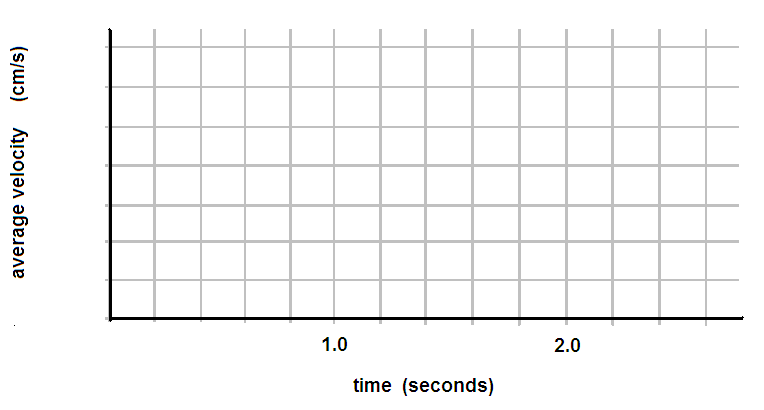
1. Time how long it takes the ball to go the full length of the ramp, from when you let it go at the top of the ramp to point A at the bottom. Mark the starting point somehow so that you start the ball in the same place each time.
In Table 1 record 5 good trials for the ball rolling from start to point A. Measure the distance over which you timed the ball.

2. Mark point B about 3/4 of the way down the ramp. Release the ball just like in Question 1, and time how long it takes to go from start to B. Measure and record the distance the ball travels on the ramp from start to B. Record 5 time trials for the ball rolling from start to B.
3. Mark point C about halfway down the ramp, as shown in the figure above. Time the ball's trip from start to C. Measure and record the distance from start to C and 5 time trials.
4. Mark point D about 1/4 of the way down the ramp from the top. Time the ball's trip from start to D. Measure and record the distance the ball travels and 5 good trials for time.
5. Move your data for the distances and median times from Tables 1 - 4 to the first two columns of Table 5.
The average velocity of the ball is the distance travelled divided by the time it takes to make the trip. Complete column 3 by calculating the velocity of the ball for each of the four sloped ramp distances that you timed.
6. Make a line graph of average velocity vs. time. First you have to make the scale for the vertical axis. Include the point (0,0) on your graph, too. Make the line smooth, not jagged. It does not have to touch each data point, but should go close to them.
Average velocity of a rolling ball on a slope vs. time it spends on the slope

Summary
When the speed of an object is changing, we say that it is accelerating. If the speed is increasing, the object is accelerating forwards; if the speed decreases, it is accelerating backwards, or decelerating.
7. What can you conclude from your graph about the velocity of a ball traveling on a slope?
8. Use your graph in Question 6 to estimate what the ball's velocity would be if you made the track longer so that the ball rolled on the ramp twice as long as your longest time interval.
Check the box when you are done: